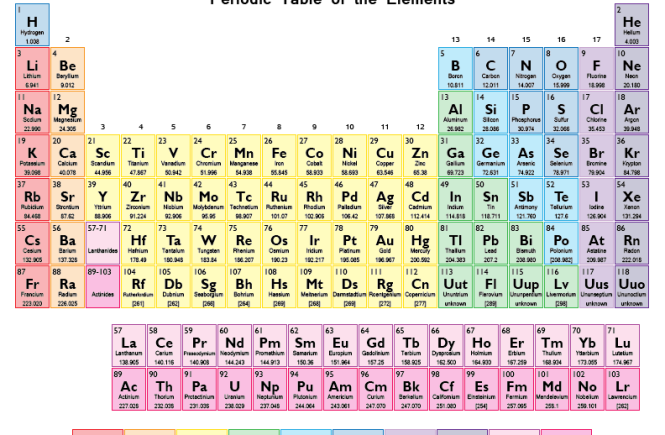Four newly discovered elements are soon to be added to the periodic table, filling up the table’s seventh row and marking the first additions since 2011.
To gain a spot on the periodic table, an element has to pass muster with the International Union of Pure and Applied Chemistry. Elements at the outer bounds of the periodic table are what chemists call superheavy (a reference to their increasing number of atoms, which correspond to their number on the table), and they’re all super unstable. Created artificially by slamming nuclei into one another in the lab, these heavyweight champs last for just tiny fractions of a second before decaying into elements that cannot be detected.
Three of the new elements (115, 117 and 118) were approved with credit to a team of Russian and American scientists from the Russian Joint Institute for Nuclear Research, the Lawrence Livermore National Laboratory and Oak Ridge National Laboratory, while a fourth they had attempted to claim (113) was credited to a team in Japan after the IUPAC’s assessment.
The elements have the temporary names of ununtrium, ununpentium, ununseptium and ununoctium. The teams that discovered them can now set about giving them official names.
“To scientists, this is of greater value than an Olympic gold medal,” Nobel laureate Ryoji Noyori, former president the Riken institute that discovered element 113, told the Guardian.
The IUPAC allows element names based on mythological concepts, minerals, scientists and places — or, of course, properties of the elements themselves. Once submitted, the names will be checked for their ability to be used by speakers of multiple languages, their consistency with other elements and other possible conflicts.
After that, the names and their two-letter symbols will be put out for a five-month public review that will culminate in the IUPAC’s final decision.
Meanwhile, scientists around the world are already working on the superheavy elements that will fill up row No. 8.






1 comment
I like your blog, thanks for sharing. I love this information you shared with us. I am waiting for your next post. Keep it up.